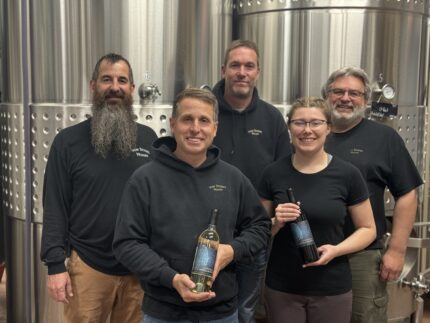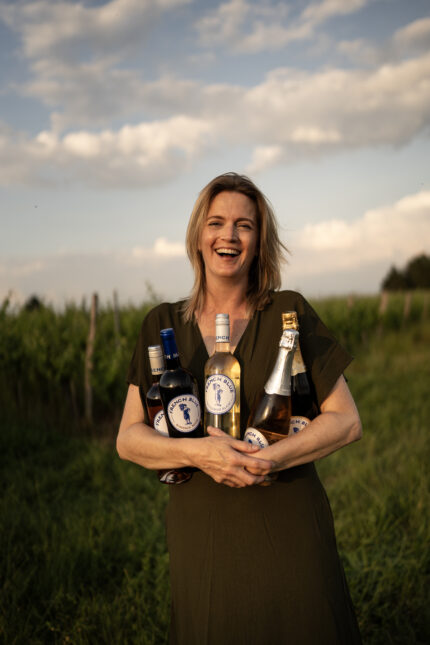This month’s #winestudio focused on the Riesling wines. Specifically, Massanois, a distributor of high-quality and boutique wines, introduced us to wines from Karthaeuserhof and Weingart Max Ferd. Richter, two wine estates located in Germany’s Mosel region.
Rieslings, while like candy to people who love wine, are often misunderstood in the United States – even though it remains the most important export market for German wines. Perhaps it is because of the transformative nature of different Riesling wines? Perhaps it is because the labels are a puzzle that are hard for consumers to solve? Perhaps it is the varying styles of Riesling – from peach to mineral to floral to fuller body with notes of mineral and steel?
Our first wines were from Karthaeuserhof – the 2012 and 2015 Rieslings – which is located on the Ruwer, a tributary of the upper Mosel near the town of Trier. On the Mosel, the banks with their blue slate soil rise so sharply that the vineyards are some of the steepest in the world. It was also said that there was no back label on the wines because with the secret picnics (often with mistresses) that would occur on the River, they would wash off.
The next session focused on a wine from the estate of Weingart Max Ferd. Richter. The estate has been passed down from father to son for the past 300 years and is currently on its ninth generation. The wines are from single vineyards, are sustainably farmed and have a similar steep terroir that influences the wines.
Riesling wines
We tried the 2015 Juffer Kabinett Riesling and the 2015 Graacher Himmelreich Riesling Kabinett and both were a great representation of fruit, minerality and floral notes.
Our last session focused on how to decipher those tough to read bottles.
- The word trocken means dry, but always check the alcohol percentage listed – at 12.5 percent or higher, the wine will taste dry; 11 to 12.5 percent will show some off-dry sweetness; while alcohol that is lower around 8 or 9 percent is the sweetest.
- Look at the region. Different regions have different styles. Here’s a great link to find out which one aligns to your taste.
- Different Rieslings have different quality levels. Qualitätswein, or QbA, is good; and Prädikatswein, or QmP, is known to be best. But a group of wine estates (Verband Deutscher Prädikatsweingüter) banded together when they were tired of the confusion and created four categories to help consumers.
– Gutswein: estate wine, dry
– Ortswein: village wine
– Erste Lage: first growth from one site
– Grosse Lage (dry wines can also be labeled as Grosses Gewächs): great growth/grand cru (from dry to sweet), from one site.
- With a QmP designation, the label will include one of five designations, known as a Prädikat, to designate the grapes’ ripeness level when it was harvested.
– Kabinett: the lightest with defined fruit and the least ripe.
– Spätlese: More textured, rounded and full-bodied.
– Auslese: The most body and substance with layers to texture.
If you remember one thing, seek out the VDP logo and the phrase Grosses Gewächs, which means great growth. And seek out a German Riesling. There was a question from Tina Morey from #winestudio asking the participants about Riesling. “It is transparent, pure, balanced and quite the chameleon – is that the problem?” It shouldn’t be with wines made this well, at this price point and with such history.






